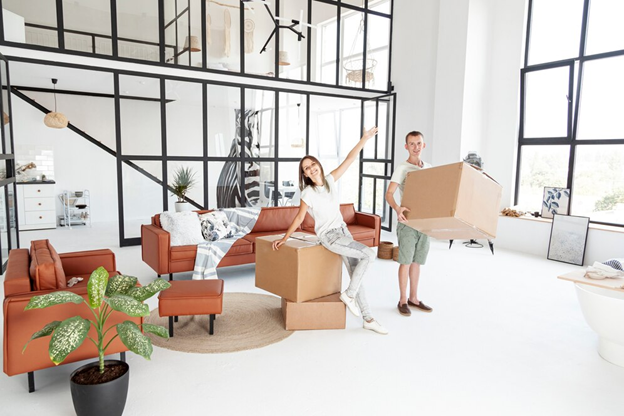Journal
How to Create Open Concept Living Spaces that Flow
.png)
by Natalie Akins
The open concept is a hot trend in home interior design. It can do wonders for creating an inviting ambiance. Reconfiguring your interior layout is also much easier without having to maneuver around walls. In addition, there are some natural daylighting and energy efficiency benefits.
With that said, correctly designing an open interior is easier said than done for many homeowners. It can often feel overwhelming to manage sprawling, unencumbered spaces. To help navigate these challenges, keep reading as we explore 7 ways to create open-concept living spaces that flow.
1. Add Window Area
Ample window area is one of the best ways to create a flowing open interior. The transmission of natural light makes the space feel brighter and more inviting. Adequate treatments, such as shades, blinds, and curtains, will help control how much sunlight enters the interior on particularly warm days.
Also be sure to check the quality of the seals at key joints and window-to-wall transitions. Although window area is essential to the open interior, it can create a vulnerable building envelope if the quality of the frames is not top-notch.
2. Establish Focal Points
Without any features to arrest attention, open interiors can sometimes give off an “empty box” vibe. As such, it is crucial to establish some key focal points that give life to the open concept.
Statement furniture is crucial, with a plush sectional perfectly balancing the lines between comfort and style. Adding modern crown moulding to the ceilings adds vertical dimension to the space and provides a “tied-together” aspect. Stone accent walls help break up space and offer some natural character.
3. Reduce Clutter
It can feel like there is more room for “stuff” when going with the open concept. However, it defeats the purpose if every corner of the space is stuffed with a quaint relic. Make sure that every aspect of the design serves a purpose. If an old ottoman or end table is just a place for mail to accumulate, get rid of it or move it to storage.
One particularly impactful design trick when working with the open interior is to keep the walls as free as possible. Don’t put furniture up to walls. Having 360-degree access will enhance the sense of spaciousness and make the area more functional.
4. Choose Light Colors
Light colors are the way to go with open interiors. They better reflect natural sunlight. This helps the space feel brighter, lively, and more spacious. When going from dark to light when converting an open interior, be sure to use a quality paint stripper before adding fresh coats. This helps guarantee a uniform appearance that enhances the space’s sense of clean elegance.
5. Create Transitions
Creating transitional spaces is a key to leveraging the open concept. Transitions create a “sum of the whole” effect. Transitions are most common between the living room and kitchen. By replacing old-fashioned kitchen walls with a more dynamic kitchen island, homeowners create a larger space for bustling mealtimes that can easily switch to a comfortable area for game night, homework, or other leisure activities.
Interior/exterior transitions are also increasingly en vogue. It helps bring a little bit of nature inside for a natural, relaxing environment. Some ways to enhance transitions between interior living areas and connected patios include installing sliding glass doors, using the same 12x12 wood flooring tiles in both the interior/exterior, and carefully placing plants that seamlessly segue the connected spaces.
6. Ensure Comfortable Temperatures
Getting the temperature right can be a challenge for some open spaces. There are fewer walls to block unwanted heat and A/C transfer. In addition, almost all open concepts feature hard flooring options, which can become cold and unforgiving if not properly accounted for.
There are several design best practices that can enhance the comfort of open interiors. Windows that feature low-E glass are designed to block thermal transmission on hot days and allow it on colder days. This can provide some natural climate control without overworking the HVAC system.
Portable directional fans can help improve ventilation on warm summer days, keeping the space airy and comfortable. Innovative radiant floor heating eliminates cold pockets in hard flooring, keeping the surface at a comfortable temperature at all times of the day.
7. Leverage Glass Features
Glass is one of the most important building materials for the open concept. As mentioned, it will be paramount to increase window area and connecting interior/exterior spaces. It also can have a huge impact inside the house. Glass pocket doors are a vibrant option when building a home office. Demountable glass partition walls can create defined space without inhibiting the sense of openness. Glass staircase railings offer safety without restricting sight lines inherent to the open concept.
Guarantee Form and Functionality with Open Concept Designs
From increased window area to bold focal points, creating a flowing open interior takes some careful execution. By considering any of the expert tips listed above, you put yourself on the right path for creating a stunning open concept living space. For more ideas on how to transform your commercial or residential interiors, explore the content at Amy Youngblood Interiors for the leading insights in the industry!
Author Bio:
Natalie Akins is a freelance writer that loves sharing her knowledge and expertise in interior design and remodeling. She also has a background in the Hospitality and Real Estate Industry. She lives in her hometown of Austin, Texas where she enjoys spending time with her husband and decorating with her children. Natalie’s work as a freelance writer can be found on Building Product Advisor, a new construction industry resource site.

.png)
.png)
.png)
